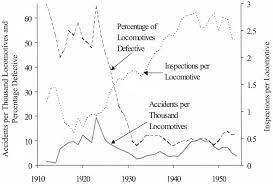
Railroads must do more to reduce train crews’ exposure to toxic diesel fumes. This is both a matter of regulatory compliance and basic workplace safety.
My Virginia-based law firm colleagues and I have helped several retired railroad workers win cases based on lung diseases developed while they were crewing trains for companies like CSX and Norfolk Southern, Whether our Federal Employers Liability Act case client was living with asthma and chronic obstructive pulmonary disease or had developed cancer, the common factor was thousands of hours—years’ worth—of breathing in diesel fumes while working in poorly ventilated, often unair-conditioned locomotive cabs.
LEARN MORE
- What, Exactly, Is the Federal Employers Liability Act (FELA)?
- Railroads Must Protect Employees From Injuries by Inspecting, Properly Equipping Locomotives and Rail Cars
- Why Filing a Written Accident Report Strengthens Your FELA Claim
Decades of research document a clear, causative relationship between constant exposure to exhaust from diesel engines and the development of debilitating and fatal lung diseases. Engineers, conductors and other train crew members, as well as rail yard workers, cannot avoid exhaust from locomotives entirely, but much can be done to minimize exposures.
Federal rules to do exactly that have been issued under the Locomotive Inspection Act. Currently, complying requires railroads to ensure that diesel exhaust vents around the crew cab and does not enter through vents or open windows. This is largely a locomotive design issue, ensuring that exhaust pipes direct fumes away from the engine and over the roof. It also leaves railroad employees outside locomotives at high risk.
Additional employee safety measures would include
- Air-conditioning, sealing and pressurizing crew cabs to complete block the infiltration of diesel exhaust;
- Mandating the use of masks or respirators by mechanics, trackmen and other employees who work near idling locomotives;
- Regularly rotating workers out of jobs where they are likely to breathe in diesel exhaust;
- Ensuring workers can take frequent breaks in areas where diesel fumes are not present; and
- Developing work rules that limit the time it takes to complete tasks near idling locomotives.
EJL